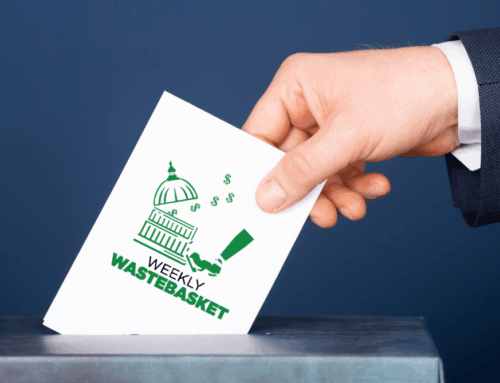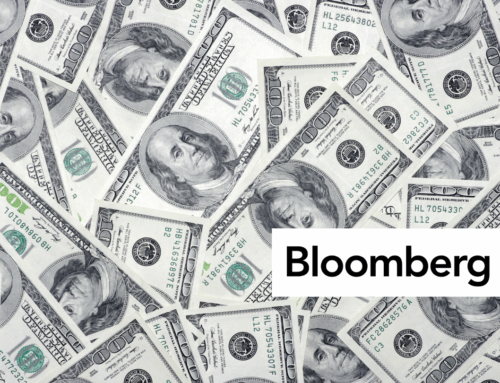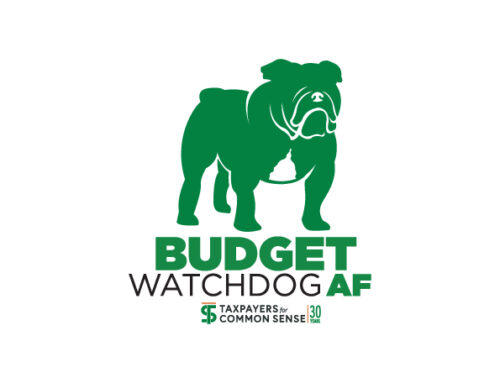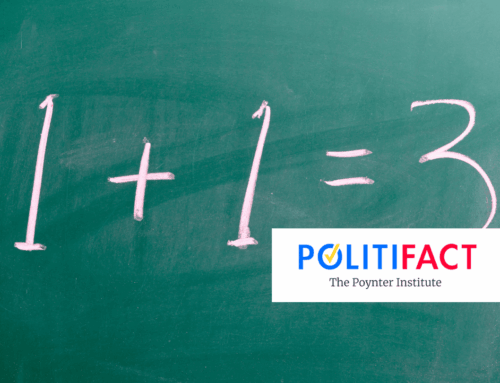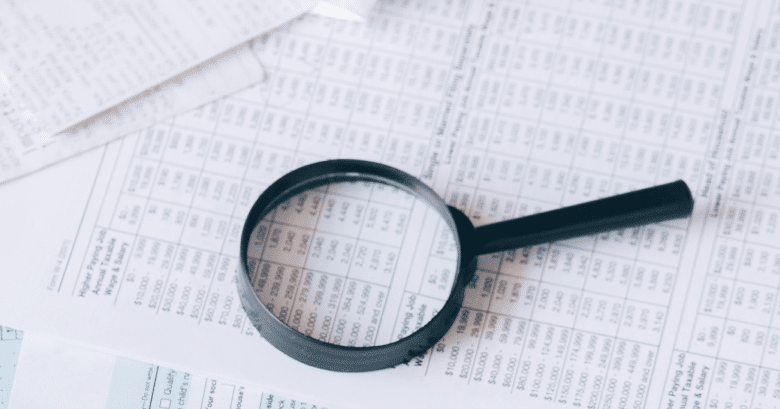In this episode, TCS President Steve Ellis and Director of Research Josh Sewell tackle the Trump administration’s tariff bonanza and explain why counting tariff chickens before they hatch is a recipe for fiscal disaster.
They break down how tariffs work (spoiler: American companies pay them), why predicting tariff revenue is about as reliable as a chocolate teapot, and explore lawmakers’ creative schemes to spend money that may never materialize. From Senator Josh Hawley’s stimulus-style rebate checks to a proposed agricultural fund that essentially uses tariff money to compensate farmers for tariff damage (yes, really), the hosts reveal Washington’s latest adventures in wishful thinking economics. Plus: why businesses hate uncertainty almost as much as they hate filling out tax forms, and how “rule by tariff” is making economic forecasters reach for the antacids.
Transcript
Announcer:
Welcome to Budget Watchdog All Federal, the podcast dedicated to making sense of the budget spending and tax issues facing the nation. Cut through the partisan rhetoric and talking points for the facts about what’s being talked about, bandied about and pushed to Washington, brought to you by taxpayers for common sense. And now the host of Budget Watchdog AF TCS President Steve Ellis.
Steve Ellis:
Welcome to All American Taxpayers Seeking Common Sense. You’ve made it to the right place for 30 years. TCS that’s taxpayers for common sense, has served as an independent nonpartisan budget watchdog group based in Washington DC We believe in fiscal policy for America that is based on facts. We believe in transparency and accountability because no matter where you are in the political spectrum, no one wants to see their tax dollars wasted. August 1st, 2025 marked a new chapter in President Trump’s rule by tariffs with rates on imports from nearly 170 countries jumping between 10 and 41%. The administration also declared copper imports a national security threat gave Mexico a 90 day pause on new tariffs and continues apparently never ending negotiations with China. Budget watchdog AF faithful. The only thing certain about President Trump and trade is uncertainty. That uncertainty should make taxpayers very wary of lawmakers claiming they can spend speculative tariff revenue. Here to help us understand why tariff revenue projections are about as reliable as a chocolate teapot is TCS Director of Research and policy Josh Sewell. Hey Steve. Like always glad to be here. Josh, let’s start with the basics. What exactly is a tariff and how much revenue do they generate?
Josh Sewell:
So a tariff is simply attacks the government charges on goods imported into this country. So the importer of record as it’s known, typically a US company pays the government a fee that the moment the product part or raw material is unloaded on US shores. So companies can manage this cost however they choose, bake it into the price for their buyers, or they can absorb it or they can negotiate with the foreign suppliers to cover that cost. But whatever a company does, that tariff paid by the importer goes to the government as revenue.
Steve Ellis:
Now, tariffs back in the founding of our country, I was in Austin, the Coast Guard originally, it was the revenue cutter service created in 1790. Its birthday is actually today on August 4th, happy Birthday Coast Guard, but that was a big source of revenue until the 20th century and then income taxes became part of the income flow. So in modern history, how big of piece of the federal revenue pie are we talking about with tariffs?
Josh Sewell:
Yeah, not big at all, Steve. So in 2024, last tariffs generated $77 billion, which is a lot of money, but in the federal budget only made up 1.5% of federal revenue because we have a very large federal government and that’s one and a half percent. That’s about what they’ve been generating for the last number of years. So we’re talking revenue that is equal to about 0.3% of our gross domestic product. Pretty small.
Steve Ellis:
Yeah. So tariffs aren’t exactly the golden goose that some people make them out to be, but Josh, the Trump administration has dramatically increased tariff rates. So what’s the revenue impact been so far?
Josh Sewell:
Well, it’s just math and there’s no question that the tariff revenue has jumped. Tariff collections hit a record 27 billion in June. That’s actually 21 billion more than in June of 2024. We’re looking at about, I think it’s around 150 billion through the end of July as a total for this calendar year. And the administration is projecting that the tariffs could total about 300 billion by year’s end. And that’s because again, regardless of who ultimately bears the cost, the importer’s initial payment lands squarely on the federal balance sheet and stays there.
Steve Ellis:
But Josh, this is where it gets tricky for budget purposes, right? I mean predicting future tariff revenue.
Josh Sewell:
Exactly. Most estimates rely on what’s called static analysis, and it’s what it sounds like, assuming that tariff changes don’t alter behavior, things stay the same, but rising costs always change behavior. That should be common sense. And often that changes dramatic. So think about when egg prices spiked. Some people ate fewer eggs, some baker switched to applesauce, and those with no alternative simply paid more, leaving less for everything else that they wanted to spend on.
Steve Ellis:
And one of the administration’s stated goals with tariffs is to boost domestic manufacturing. If that works,
Josh Sewell:
Then there will be fewer imports to tax. So it’s the classic tariff paradox. The tax foundation’s model is one of these credible groups that models these kinds of things. They estimate that tariffs will generate $2.4 trillion over 10 years using static analysis, static analysis done prior to August 1st when there were some increases in tariffs. But that same analysis finds just $1.7 trillion when you account for behavioral changes that they assume in their model. So the bottom line, even if tariff rates stay constant, revenue is uncertain when the rates themselves change constantly. It’s frankly, it’s anyone’s guess.
Steve Ellis:
And Josh, this gets to the heart of what we saw in our previous episode about Liberation Day. President Trump sees tariffs as his Swiss army knife, or wait, I guess I should say an American army knife. It’s a multi-tool for foreign policy reviving domestic industries and generating revenue, but that makes them inherently unpredictable.
Josh Sewell:
Absolutely. So the president changes the details by the day, yes. On cars, no on cars, yes. On Canada and Mexico. Well actually we’ll give them a 30 day break, and I believe now we’re actually giving Mexico an additional 90 day break to have some more negotiations, whether you like it or not. The fact is that nobody knows what the tariffs will look like tomorrow, let alone next year, and certainly not over the next 10 years, and more than half of which this president will not be in office anymore over these next 10 year baseline. So even when you know the details and they’re consistent, you can’t actually predict consumer behavior or ultimately what you’re going to generate from tariffs. It’s just not truly
Steve Ellis:
Predictable. But that obvious and glaring uncertainty hasn’t stopped lawmakers from treating tariff revenue like found money. Has it? Oh, not at
Josh Sewell:
All. So Commerce Secretary Lutnick says that tariffs will eliminate the deficit which is projected to total, as you might know, 25 trillion over the next decade. No, not happening. Lawmakers have also claimed back last few months that increased tariffs would more than offset the $3.4 trillion price tag for the reconciliation bill. Again, not happening. Now, at one point, I think it was back in April, if I remember correctly, the president even floated the idea that tariff revenue could replace the entire individual income tax. Income tax brought in $2.4 trillion last year alone. Steve, not even the rosiest projection suggests tariff revenue will multiply 30 fold or more to cover those costs.
Steve Ellis:
Yeah, imagine having a tax that replaces a tax kind of almost an admission of by the president that this is really a tax on Americans. Okay, so these claims are fantasy, but the bills some lawmakers are introducing to spend this phantom revenue, that’s where the fiscal nightmare begins, right Josh?
Josh Sewell:
Right. One of the most prominent is the American Workers Rebate Act introduced by Missouri Senator Josh Hawley. It’s modeled after the COVID era stimulus checks you might remember. And so the bill would send $600 rebate checks to most Americans plus $600 per child. So $2,400 for a family of four. Now the checks do phase out once income exceeds $75,000 for individuals and $150,000 for joint filers. But that’s still going to cover the majority of Americans, and those checks would consume a huge chunk of any tariff for receipt that come in.
Steve Ellis:
So that’s Senator Hawley’s proposal. But even more audacious is the trade fund proposed by representative Julia Lau of Louisiana, isn’t it?
Josh Sewell:
Oh, this one is something else, Steve. This one that’s known as the tariff response and damages to exports fund, which if you love acronyms, is the trade fund would actually let the president divert tariff revenue from agricultural products into a new fund to send relief checks to farmers hurt by lost exports, foreign retaliation or higher input costs like seed and fertilizer.
Steve Ellis:
Wait a minute, we need a new fund paid for with tariffs to compensate farmers for harms caused by tariffs.
Josh Sewell:
Welcome to Washington, Steve. You got it. Nevermind that the administration is already doling out 31 billion in agricultural disaster aid that was authorized by Congress last December. Also, ignore the fact that farm interest just secured 67 billion in additional farm subsidies in the reconciliation bill AKA one big beautiful act. Also, most importantly, let’s not forget that the administration has access right now to a massive slush fund known as the Charter Act, and it was that Charter Act authority that the first Trump administration tapped to hand out 23 billion in again, what they called emergency trade assistance during the first iteration of the president’s trade war. So Josh,
Steve Ellis:
Let’s dig into this trade fund a little bit more. What exactly would it do?
Josh Sewell:
I could talk about this for a long time, but I’m going to be as brief as possible. So what this bill would do is it would authorize through fiscal year 2030, a new fund, brand new thing controlled by the Secretary of Agriculture. So the president gets the authority that if he so chooses can deposit any funds raised under chapters one through 24 of the harmonized tariff schedule, which is basically all food and food products that are coming into this country. The secretary shall use, which is different than May shall use those funds to make payments to agricultural producers who have been affected by export competition, reduction in access to foreign markets or other trade related market disruptions. That definition seems pretty broad, extremely broad, affected by export competition. So you’ve had to compete, I mean, trade related market disruptions, that’s basically the definition of trade, not necessarily a trade war. You can see reduced exports because you’re not as good at running business as used to be because the economy changes. It’s not necessarily because there was some nefarious action occurring. It’s sometimes just what happens and get this too. The real kicker, one of the justifications for payments is increases in the cost of items necessary for agricultural production, but inputs are more expensive right now. Inputs like fertilizer seed and other items because of tariffs. So
Steve Ellis:
Again, we’re creating a fund paid for with tariffs to compensate people for the effects of tariffs. This is like creating a program to help people who get wet from the rain funded by a tax on umbrellas.
Josh Sewell:
That’s a perfect analogy, Steve. And this is on top of what we call the subsidy sandwich layer upon layer of agricultural support programs that farmers can access simultaneously. Absolutely free basic crop insurance layer on top of that buy up coverage and crop insurance layered on top of that. It’s shallow loss programs free from taxpayers, and actually it’s gotten to the point now with the emergency disaster aid and the trade aid the last time this other stuff, it’s not just a sandwich anymore. It’s like a smorgasbord, I don’t know what to call it. Maybe it’s a buffet. It’s this option where you can get anything you want covering every single cost because that’s just the way and the fact that this bill would compensate people for harms supposedly caused by terrorists by using tariff revenue. It’s almost as if there was a conspiracy to do this. I’m not much of a conspiracy theorist, but it makes me think that the entire trade war is a conspiracy to get more funds just to farmers. I don’t know what else the answer could be. It’s ridiculous.
Steve Ellis:
All right, pulling that soap box away. All right, so Josh, speaking of unpredictability, what does all this tariff volatility mean for businesses and the economy?
Josh Sewell:
So if there’s anything that businesses and individuals want, it’s stability and predictability, especially that predictability part. So they want to know and make plans right now, especially considering President Trump pulls things back or changes on the fly. There isn’t any of that predictability and that is actually starting to have a hit on the economy. Consumers are holding back. We’ve seen it in the data, you’ve seen it. The Fed just announced the inflation is higher than they want. Consumers are spending less than they want. Businesses are either hoarding goods they’re buying now because they’re worried about future tariffs, but then at the same time, they’re not sure about their investment decisions. So there’s hoarding and then there’s less sales later. It just looks like businesses and individuals are just not doing well. Businesses are not hiring the job. Numbers came out today and they were much lower than expected, and actually the last couple of months were significantly updated to be much less than the initial thoughts of job gains. And so it all comes down to this fact that why would you change your business approach or your personal approach to your savings and spending if you think a tariff is here for a couple months but then gone after that, it just causes too much disruption.
Steve Ellis:
And the economic forecasters are getting worried, aren’t they?
Josh Sewell:
Yeah, I saw according to Goldman Sachs, Goldman sees a greater than one in three chance of a recession in the next year, which is higher than what they were expecting earlier. Now many forecasters are talking about comprehensive tariffs that could further slow the economy while raising unemployment and inflation rates. It’s just hit after hit after hit right now.
Steve Ellis:
But you watchdog af faithful. You may not know this, but I’m older than Josh and I may have been a kid, but I remember the term stagflation from the 1970s. That’s where you have a shrinking economy and increasing prices, and that is recipe for economic disaster.
Josh Sewell:
And even if there is a recession, mild or severe, you’re going to see increased spending on an unemployment insurance, increased spending on snap food assistance and increase spending on trade adjustment programs. Even if you think tariffs will eventually revive American manufacturing, there’s an adjustment period. So between where we are now and whenever, if that occurs, there’s going to be significant costs.
Steve Ellis:
And actually if you really is the goal, and we talked about this American army knife approach that President Trump has, but if really the goal is to bring back manufacturing, you need to have predictability because who’s going to build a plant, a facility, invest in doing this type of work if they don’t think it’s going to be consistent going forward?
Josh Sewell:
Yeah, understanding the tax and spending levels of our government is an important part for understanding a business. It’s not just about regulatory uncertainty. Taxes are extremely important too when you’re making these long-term budget decisions as a company.
Steve Ellis:
Alright, Josh, let’s bring this back to budget reality. Why shouldn’t tariff revenue be used as an offset for spending or tax cuts?
Josh Sewell:
So I can’t emphasize enough that this all really underscores why terror of revenue has not been and typically is not allowed to be used as an offset for spending. It’s just too speculative, it’s too volatile. You cannot assume that we’re going to have massive amounts of revenue when we don’t know all the factors that are going into the equations. Especially you cannot assume that revenue to pay for things that are going to happen right now, whether it’s a tax cut or a new program will be paid for by a hope for or a speculative revenue somewhere down the line. We just have to be more conservative and underestimate rather than overestimate. This isn’t a problem just for tariffs. This is for all revenue, but it’s especially acute when you’re looking at tariffs, which can change apparently at the snap of a finger or a post on truth social.
Steve Ellis:
And there’s historical precedent for this caution, right? What happened during the first Trump administration?
Josh Sewell:
Yeah. During the last trade conflict, there were bailouts, we talked on it a little bit. The tariffs from foreign countries led to anticipated significant losses in farm country. And I say anticipated because there were losses and others there weren’t losses. But the administration responded by forking over 23 billion in cash to buy political goodwill, and that’s just the dollar sent directly to farmers. There were a few billion dollars more spent to buy products for food banks and for trade promotion programs. One of the ironies, we spent more money on trade promotion while stopping our trade. In many respects, I can tell you that just like last time, if it turns out that tariffs get better trade deals and those tariffs are then lifted, Washington is not going to ask for that money back. Washington doesn’t usually ask for money back and it certainly doesn’t ask it back from its friends lawmakers. And so we didn’t do that last time. Trump won’t do it again. So some farmers did in fact make out like bandits because they didn’t see those losses that they were feared coming down on the line, but they still got to keep that trade assistance payment. Nobody rescinded that one. Josh, what’s the bottom line for taxpayers?
So what everyone thinks of the president’s trade strategy, taxpayers must insist that lawmakers operate in fiscal reality. Fantasies about massive tax revenue are just that fantasies, but the spending schemes tied to them are all too real. If we’re not careful, this trade war just tariff, tumult, whatever you want to call it, it will become
Steve Ellis:
A fiscal train wreck and that fiscal train wreck could be enormous. We’re looking at a nearly $37 trillion debt interest payments in excess of a trillion dollars a year to service that debt. Even a short-term shock with a lot of deficit spending is going to have a huge impact on crowding out investment.
Josh Sewell:
And we need Congress and the administration to be held responsible for the fiscal ramifications of whatever their decisions are. We need everyone to evaluate those decisions against a rational, realistic, conservative, fact based baseline. Now, what we want to have, but what we actually have, not the math we want to have, the math we have before us.
Steve Ellis:
Well, there you have at podcast listeners. When it comes to tariff revenue, the only thing we can predict is unpredictability and building spending programs on phantom revenue projections is a recipe for fiscal disaster. This is the frequency market on your dial, subscribe and share and know this taxpayers for common sense has your back America. We read the bills, monitor the earmarks, and highlight those wasteful programs that poorly spent our money and shift long-term risk to taxpayers. We’ll be back with a new episode soon. I hope you’ll meet us right here to learn more.

